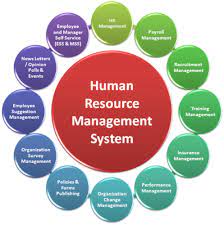In a world where food trends come and go, the seafood diet continues to exist! Because of its proven nutritional benefits and mouthwatering flavors. Moreover, seafood has been a staple in human diets for ages. Its nutritional importance is indisputable as well.
In this blog, we will look at the most effective seafood diet plan for a healthy lifestyle through a savory culinary delight.
The Nutritional Powerhouse of Seafood
Before we dive into the specifics of a seafood diet plan, let’s first understand why seafood is a nutritional powerhouse. Seafood includes a wide variety of marine animals. Which includes fish, shellfish, and crustaceans. Thus, each offers a unique set of nutrients.
Rich in Omega-3 Fatty Acids
Seafood, especially fatty fish like salmon, mackerel, and trout is known for its high omega-3 fatty acids. However, these fatty acids are essential for brain health. They help in reducing inflammation and improving heart health as well. So, they can also be of help to lower the risk of diseases like diabetes and arthritis.
High-Quality Protein
Seafood is an excellent source of protein. Protein is essential for muscle growth and repair as well as it helps keep you feeling full and satisfied. Thus, making it an excellent choice for weight management and overall health.
Essential Vitamins and Minerals
Various vital vitamins and minerals are present in seafood in excess. These nutrients help in bone health and immune system functioning.
Low in Saturated Fat
Seafood has lower levels of saturated fat as compared to red meat. Because red meat is known to increase the risk of heart disease. However, you can lower your risk of developing heart issues by choosing seafood over fatty meats any day.
Creating a Balanced Seafood Diet Plan
Now that we understand the nutritional benefits of seafood, let’s build a balanced seafood diet plan that helps us develop a healthy lifestyle.
Variety is Key
To achieve the full benefits of seafood, it is essential to have a variety of species in your diet. However, this variety makes sure you receive a broad range of nutrients required by your body. So, mix and match options like salmon, tuna, shrimp, crab, and sardines to keep things interesting.
Serving Sizes
It is advised to eat at least two portions of fatty fish per week, or roughly 3.5 ounces each. But for other types of fish and seafood, you may aim for at least two more servings per week. But always be mindful of portion sizes to limit calorie intake and avoid overeating.
Cooking Methods
Opt for healthier cooking methods like grilling, baking, steaming, or poaching instead of frying. Because these methods preserve the nutrition of seafood without adding extra calories and unhealthy fats.
Avoid Excessive Sodium
Watch out for processed seafood products with additional sodium, such as canned fish or frozen seafood. Moreover, to lower sodium levels, you may use products without salt added or rinse them before eating.
A Week-Long Seafood Diet Meal Plan
Here is a sample meal plan for a week. So that we can put our seafood diet plan into practice. This diet includes a variety of seafood to guarantee that you consume a variety of essential nutrients. However, you can find the following seafood recipes readily available by looking up seafood near me or seafood restaurant near me.
Day 1:
· Lunch: Grilled salmon over mixed greens with lemon vinaigrette.
· Dinner: Baked cod with steamed broccoli and quinoa.
Day 2:
· Lunch: Tuna and avocado lettuce wrap with a side of cherry tomatoes.
· Dinner: Shrimp stir-fry with vegetables and brown rice.
Day 3:
· Lunch: Mediterranean seafood pasta salad with olives, cherry tomatoes, and feta cheese.
· Dinner: Baked trout with asparagus and a squeeze of fresh lemon.
Day 4:
· Lunch: Sardine and avocado toast with a side of mixed greens.
· Dinner: Homemade seafood chowder with a variety of fish and shellfish.
Day 5:
· Lunch: Grilled tuna steaks with a cucumber and dill salad.
· Dinner: Broiled swordfish with roasted Brussels sprouts and quinoa.
Day 6:
· Lunch: Shrimp and quinoa salad with mango salsa.
· Dinner: Baked red snapper with garlic butter sauce and sautéed spinach.
Day 7:
· Lunch: Seafood tacos with grilled shrimp and fish, topped with avocado and cilantro.
· Dinner: Crab-stuffed bell peppers with a side of roasted sweet potatoes.
Health Benefits of a Seafood Diet
Let’s explore some of the amazing health benefits associated with a seafood-centric diet as well.
Heart Health
The omega-3 fatty acids found in seafood can help lower the risk of heart disease by reducing blood pressure and cholesterol levels. Also, they improve heart rhythm, reducing the risk of heart attacks.
Brain Health
Seafood is an excellent choice for improving memory and lowering the risk of brain-related diseases. Because it contains omega-3s, which are crucial for the health and development of the brain.
Weight Management
The high protein in seafood can help with weight management by boosting feelings of fullness and satisfaction, which may lead to reduced calorie intake.
Skin Health
Along with other nutrients like zinc and omega-3. Fatty acids also help improve skin health as well as lower the risk of acne.
Anti-Inflammatory Effects
Omega-3 fatty acids found in seafood have strong anti-inflammatory capabilities. Hence, they can help reduce the signs and symptoms of diseases like arthritis.
Seafood Sustainability and Ethics
While obtaining the health benefits of a seafood-rich diet, it is crucial to take environmental and ethical issues into account as well. Overfishing and destructive fishing methods can endanger seafood stocks and destroy marine ecosystems. To make wise decisions:
Choose Sustainable Seafood: Look for labels to ensure your seafood is sourced sustainably.
Support Local Fisheries: Support local, small-scale fisheries that often have a lower environmental impact and prioritize ethical practices.
Conclusion
The seafood diet is not just a dietary trend but a lifestyle choice that offers several health benefits. With its rich array of nutrients, a seafood diet can enhance your overall well-being. By following a balanced seafood diet plan and making responsible choices, you can savor the unique flavors of the sea. So, dive into the world of seafood and embark on a journey toward a healthier you!
















